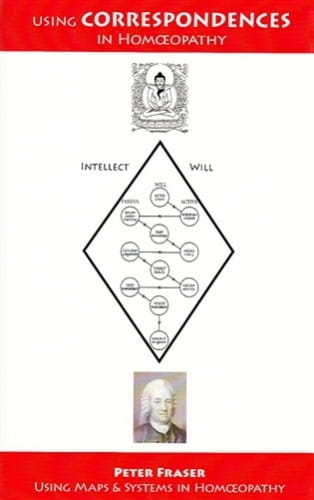Reprinted with the permission of The Alliance of Registered Homeopaths, from the magazine 'Homeopathy in Practice', Autumn 2012 edition. Reviewed by Amanda Bate.
These small pocket-sized books, not many pages in each, with clear concise front covers, deliver exactly what the look of the books suggest - a clear simple, concise explanation of their subjects. I really enjoyed the books but have had to read them more than once to ensure my understanding of the subject matter was sound. I would like to suggest that colleges include these books on their essential reading lists. These books will be of use to any homeopath and will capture the interest of, and provoke much thought, amongst homeopaths who are from a more eclectic background just as much as those from a classical background. I am looking forward to reading the other five preceding books in the series: Using Maps and Systems in Homeopathy
Using Correspondences
Clear chapter by clear chapter, Peter Fraser takes the reader through brief definitions of some of the great philosophers and philosophies including Aristotle, Plato, Neo-Platonism and then Swedenborg, explaining the connections with, and influences on, homeopathy. Peter Fraser then clarifies the Doctrine of Uses, defines the will and understanding in the way that Kent and Hering used the terms (this is very important if we are to use the works they gave us properly); then he introduces the principle of correspondence (the working of the degrees of height). This was totally new to me and so interesting I have had to read the book three times to make sure I had a good grasp of this concept. He links corredences to generals, particulars, singulars, potency and Hering's Law of Cure, finally showing us how to apply this philosophy in a practical way to better understand at what level the disturbance in our patient is primarily expressed. The examples he uses are simple and clear.
It is a great little book, providing me with two 'ah ha!' moments. The first being understanding the difference between the will and understanding; how they might be confused but how, if properly understood, enable the homeopath to see the whole picture more easily. The second 'ah ha' moment came during the chapter on the principle of correspondence, when I realised that this gives a deeper understanding of what we mean when we talk about 'similar'. It was then that the whole book came together for me; both the earlier chapters which I had found interesting but could not see where they were leading me, and the following chapters; everything linked together.
Using Provings
First, Peter gives the definition of a proving. The very first paragraph has stuck with me: A proving is a test of the genuineness of something or of its qualities. Precious metals are proved to confirm their composition before they can receive their hallmark. Seventeenth century armour had a proving mark where a musket had been shot at it to prove it could withstand a musket ball in battle. Proving therefore has two roles: to investigate the qualities of something and to confirm it's fit for purpose. He then explains why we need to understand provings and their importance, referring to the proving of the Atlantic herring as an example. One might expect that the proving would draw out the fact that being part of a group would be significant. However, this was never mentioned by anyone. In hindsight we can see that the herring is 'an obligate schooler', and can only survive as part of a group. Without the proving many (including me!) would not have realised this.
The chapter on the different types of provings was especially interesting as I had not known there were so many types: toxicology,heroic, casual, dream, meditative, trituration, seminar and the standard Hahnemannian proving. It struck me that if any sceptics of homeopathy were to read this book, some of the ways we prove remedies would confirm to them that their views of us homeopaths and homeopathy were well founded! Peter says provings are shamanistic processes involving the provers putting themselves to one side to allow the remedy to express itself through them.
In the chapter Clinical Confirmation Peter reminds us that it is here that we discover the keynotes of the remedy, which may not be quite what we would have expected from the proving. Clinical confirmation is also the way we discover the types and constitutions to which the remedy is suited.
However, Peter reminds us that some traits and characteristics of a person have become attributed to a remedy erroneously. They are not necessarily pathological. The example given is food likes and dislikes. They could be part of the disease picture, but they could just be personal preferences. Sometimes these tastes are assumed to be symptoms. If the patient then improves, the food desires and aversions could then be added to our materia medica when they were not part of the pathology and remained unchanged. Carcinosin is given as a prime example. This was quite an eye opener for me!
The following chapters describe exactly how to conduct a proving for each of the eight types mentioned, and how to publish a proving. The appendices cover notes for provers and for supervisors; how to prepare the proving diary; and even notes for provers and supervisors who are not students or homeopaths.
This book is a must for anyone involved in a proving, but will be equally as interesting to everyone else.

